Creating colorscapes
On turning around, a vision of the boundless, majestic sky.
Such stunning beauty inspires the urge to sketch and paint.
Capturing the scene in a picture, through the fingertips.
A vast, silent landscape comes to life in 150 vivid colors.
Holbein Artists’ Colored Pencil set was created in 1993.
Ever since, their reliability and quality have facilitated the work of numerous artists.
Now, 30 years on, we present Holbein Artists’ Colored Pencil Wooden Box, which combines our obsessive craftsmanship with the finest Japanese materials and techniques.
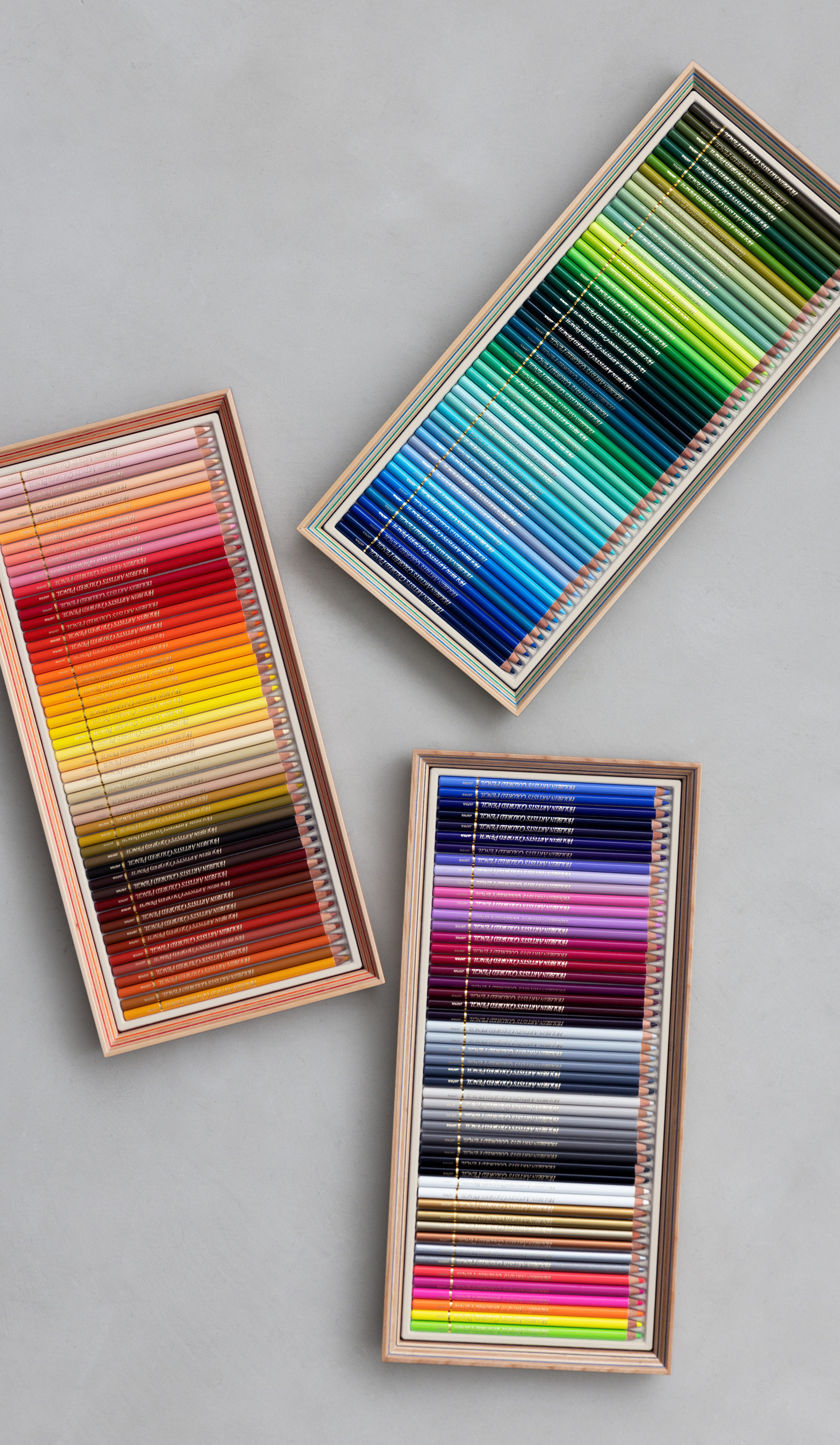
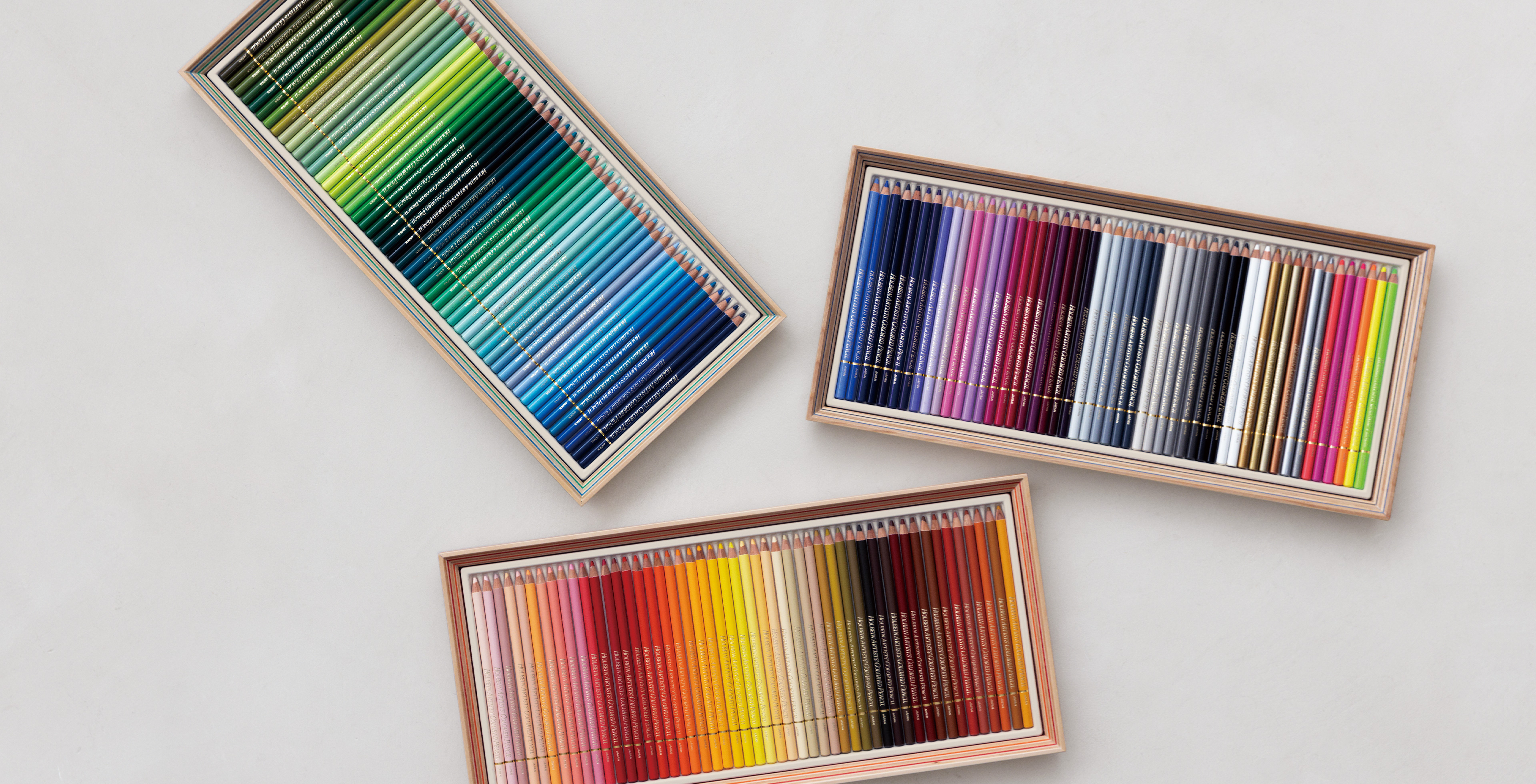
Technology and materials in the service of beauty

Together, the exquisite handiwork of artisans and the beauty of its materials make Holbein Artists’ colored pencil Wooden Box a work of art in its own right.
The lid, of natural solid wood, gives the box a unique visual charm. A layered construction of three retractable trays, reminiscent of a stackable boxes, makes it possible to view all 150 colors at once. The edges of the lid and boxes were designed with inclined surfaces, so that they can be smoothly stacked on top of each other.
The trays are made by combining wood from forest-thinning in Hokkaido with recycled paper. Both on the outside and inside of the box, beautiful, colorful lines are fashioned from the properties of this elegant material.
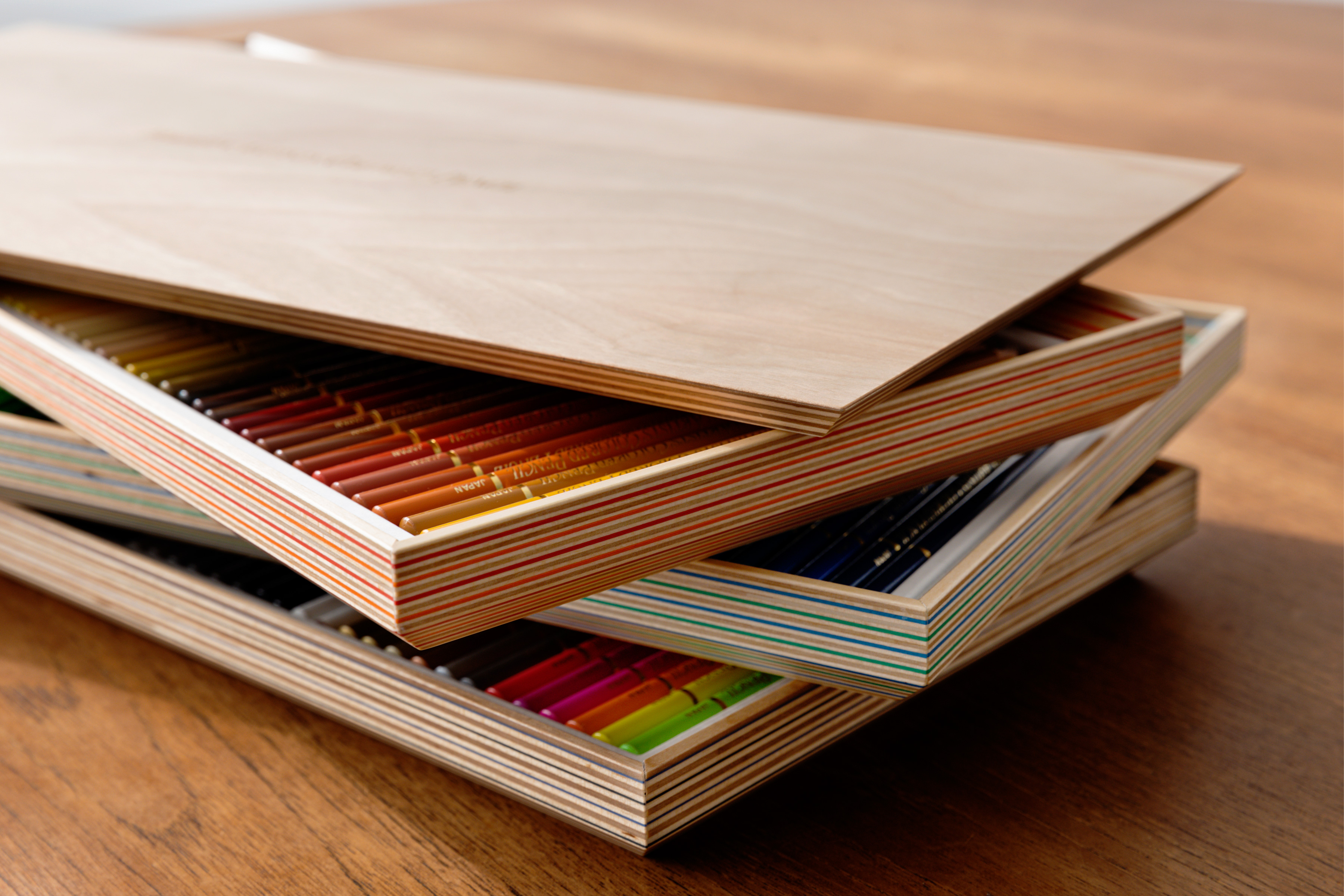
Made in Japan using eco-friendly methods
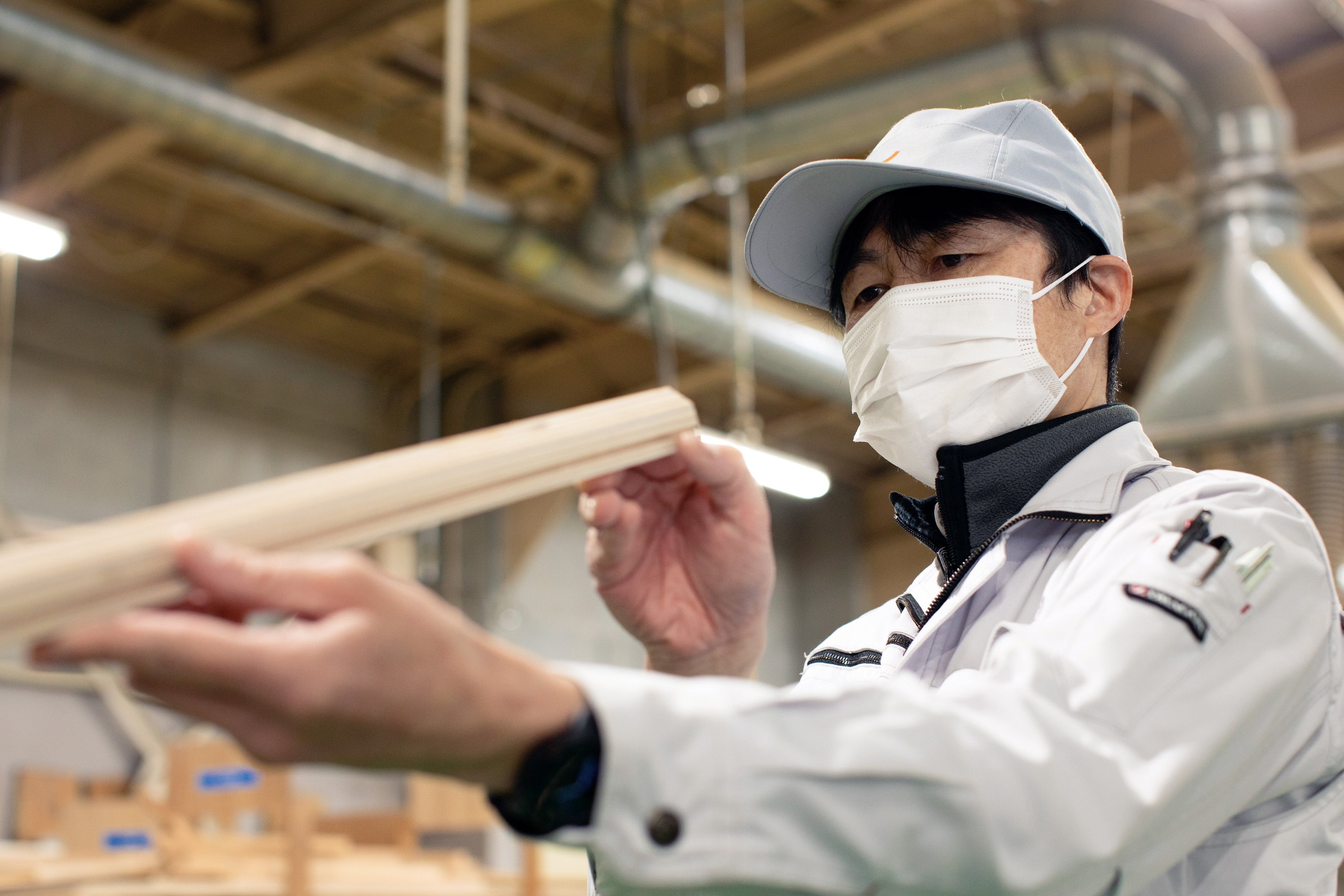
From the colored pencils to Holbein Artists’ Colored Pencil wood box itself, every part of this product is made in Japan, with all production processes performed within the country. Eco-friendly plywood is created from Hokkaido forest-thinned timber and recycled paper, joined with safe, non-formaldehyde adhesive. To make the product as eco-friendly as possible, the inner trays are made of molded pulp fiber and all the packaging and materials were selected to be easily recyclable.
Holbein Artists’ Colored Pencil
Wooden Box Set of 150 Colors
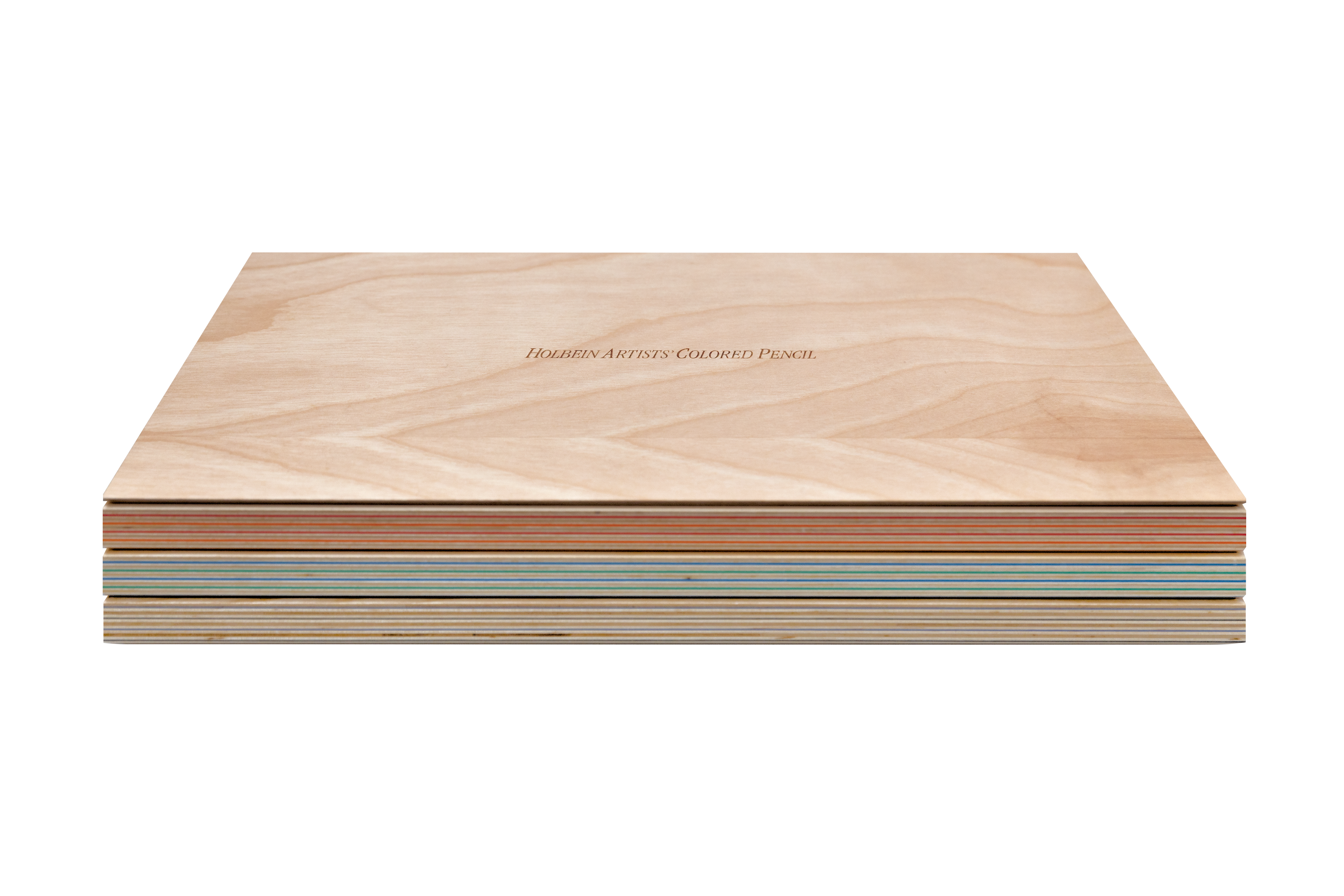
OP948
Overall size : W465×D220×H77mm
Weight: Approx. 4.0 kg (including 150 colored pencils)
Material: White birch solid wood, shina (Japanese linden) plywood, recycled paper, coated finish
Development of
the wooden box
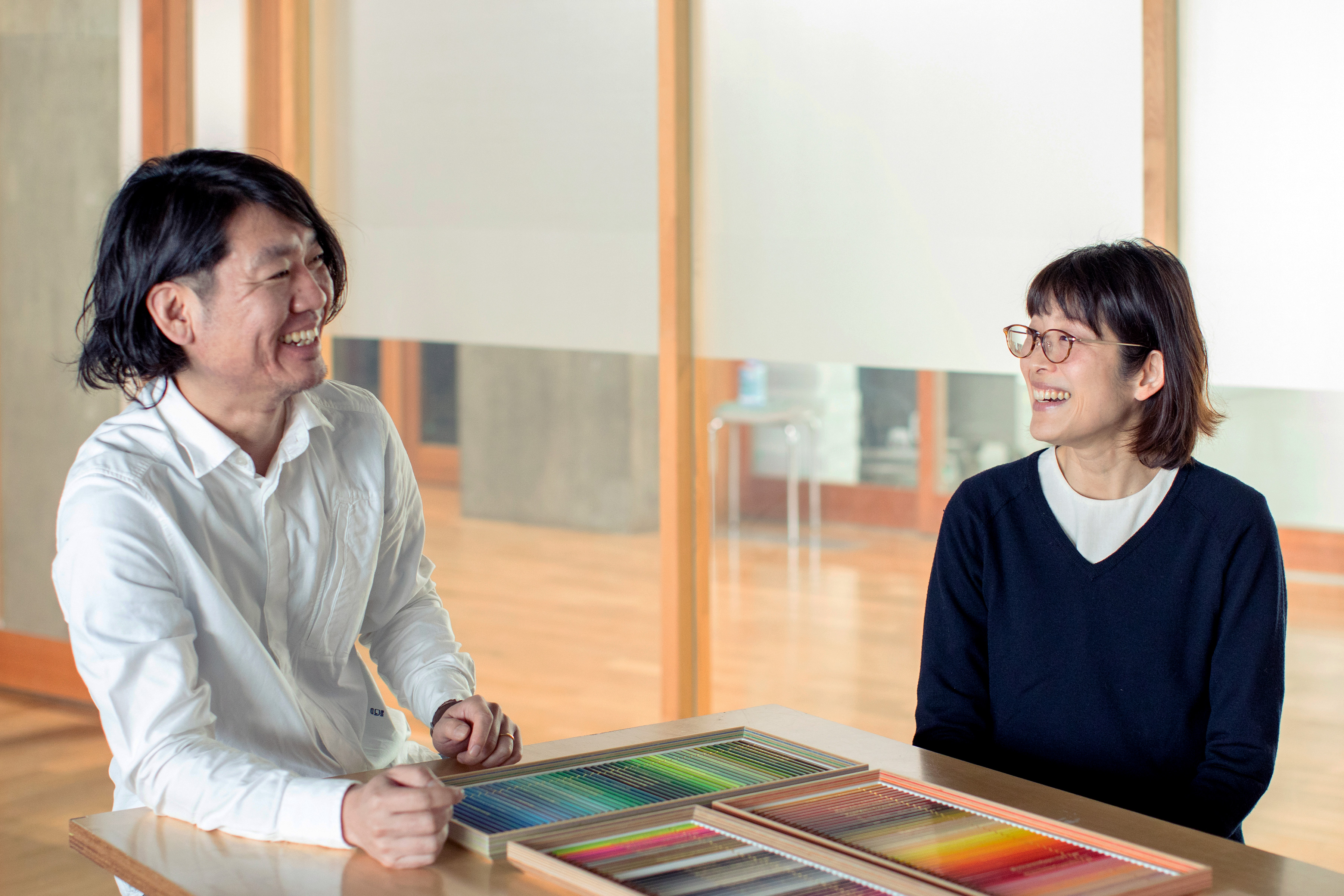
Creating the experience of 150 colors
displayed in front of you
The development of the new box for artist-grade colored pencils can be traced back to Yamagata Prefecture, which boasts a thriving woodworking industry and is home to Holbein's head of development. We talked about the circumstances of its development with Kumiko Tsukimoto from the Yamagata Research Institute of Technology (which supports manufacturing in the Yamagata region from a design perspective), who was drawn to the project out of a desire to show the world the allure of Japanese craftsmanship and to make the lives of artists more fun, and with Yoshita Watanabe, who worked on the product design of the wooden box.
A product showcasing
Japanese craftsmanship
Tsukimoto
At the beginning of this project, Holbein presented me with the two development themes of being able to see all the colors and Japanese craftsmanship. Wanting to make a premium product, we could have made it as extravagant as we wished, for example a traditional craft item, lacquered or with mother-of-pearl inlay. But I wondered if that's what our customers really wanted. Since it's a box for storing tools, in this case colored pencils, I thought it would be nice to have something that is easy to use, but also has a premium feel within everybody's grasp, that people would enjoy as a gift or as a treat to themselves.
Mr. Watanabe was involved in the design of the product that won the grand prize in 2019 at the Yamagata Excellent Design contest, which I am affiliated with. I met with Mr. Watanabe several times after that, and I thought that his attitude of working in close contact with production sites and his knowledge of crafts would be perfect for this project, so I introduced him to Holbein.
Watanabe
In the course of that job I had to act as a go-between for various factories. My professional style involves not only designing things but also bringing them to light through repeated consultations with the manufacturer.
Tsukimoto
Since we were going to go to some lengths to make it, I thought it would be nice to have something that would showcase Japanese techniques and handiwork. The number of colors that can be seen with conventional drawer-type cases is limited. We discussed how amazing it would be to be able to see all 150 colors. I first envisioned it as a craft object, but when Mr. Watanabe said, "Japanese industrial technology is amazing too, you know." I really felt he had a point.
Watanabe
In designing the wooden box, the most important aspect for me was the excitement of opening it. I wanted to recreate the thrill of opening a multi-tiered box containing traditional Japanese food at New Year. So when I stated considering which Yamagata craft would be the most suitable for this project, I opted for woodworking. I believe that this craft would allow for the pleasure of stacking the trays so that they slide, rather than having to fasten them in place with special metal fittings.
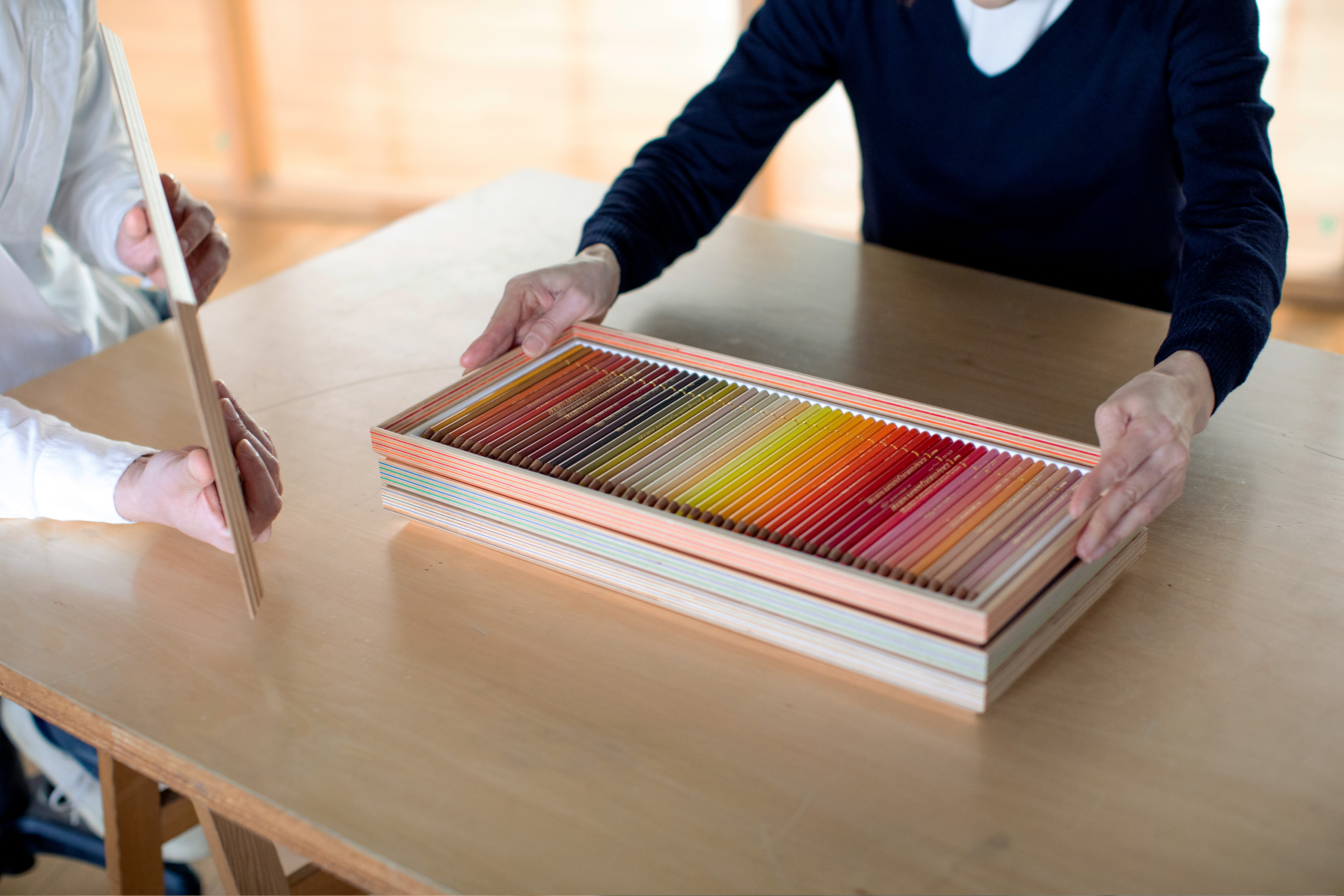
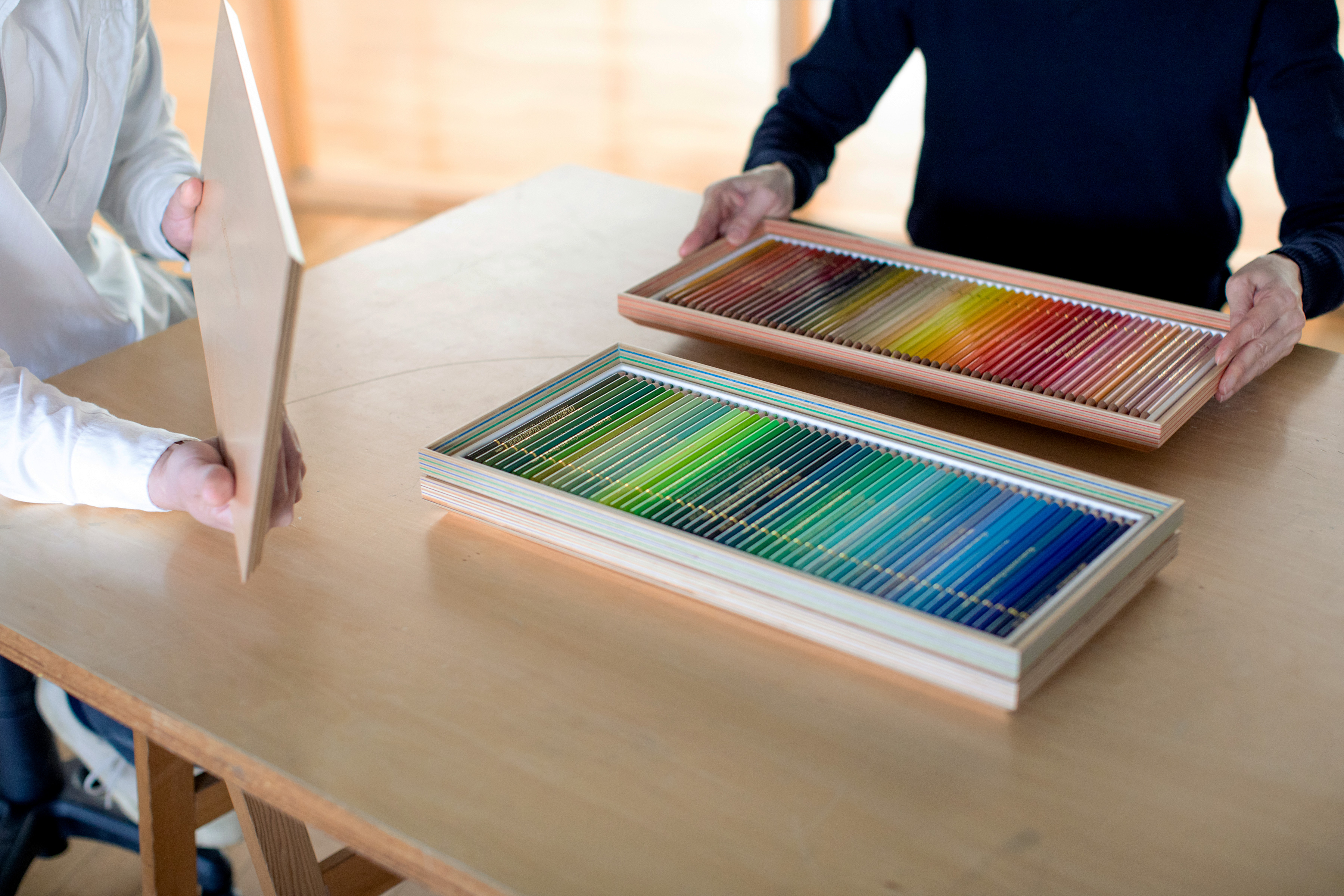
As for the color on the sides, when I visited a certain factory, I saw this colorful material that combined thinned wood and recycled paper and thought it would allow users to visualize the colors of the pencils inside the trays through the box itself. We managed to stretch it neatly on three levels to match the colored pencils.
As with design, rationalizing the manufacturing process was also an issue. As an example of taking into consideration the manufacturing process and incorporating it in the design, consider why we raised the bottom board by 0.5 mm. It helps stabilize the case when it’s placed on a surface and, since the boards are never perfectly straight, it would absorb the gap even if they are slightly raised . Also, some errors may occur in the assembling stage, so these 0.5 mm would help fix them.
Craftsmen cut and assemble each piece of the wooden box by hand, and it takes 30 minutes just to glue and dry them, so it takes time to complete one box. I also have experience in woodworking, so I was engrossed in the beauty of the process, for example thinking about how to make it, how many times you could repeat the same operation and so on.
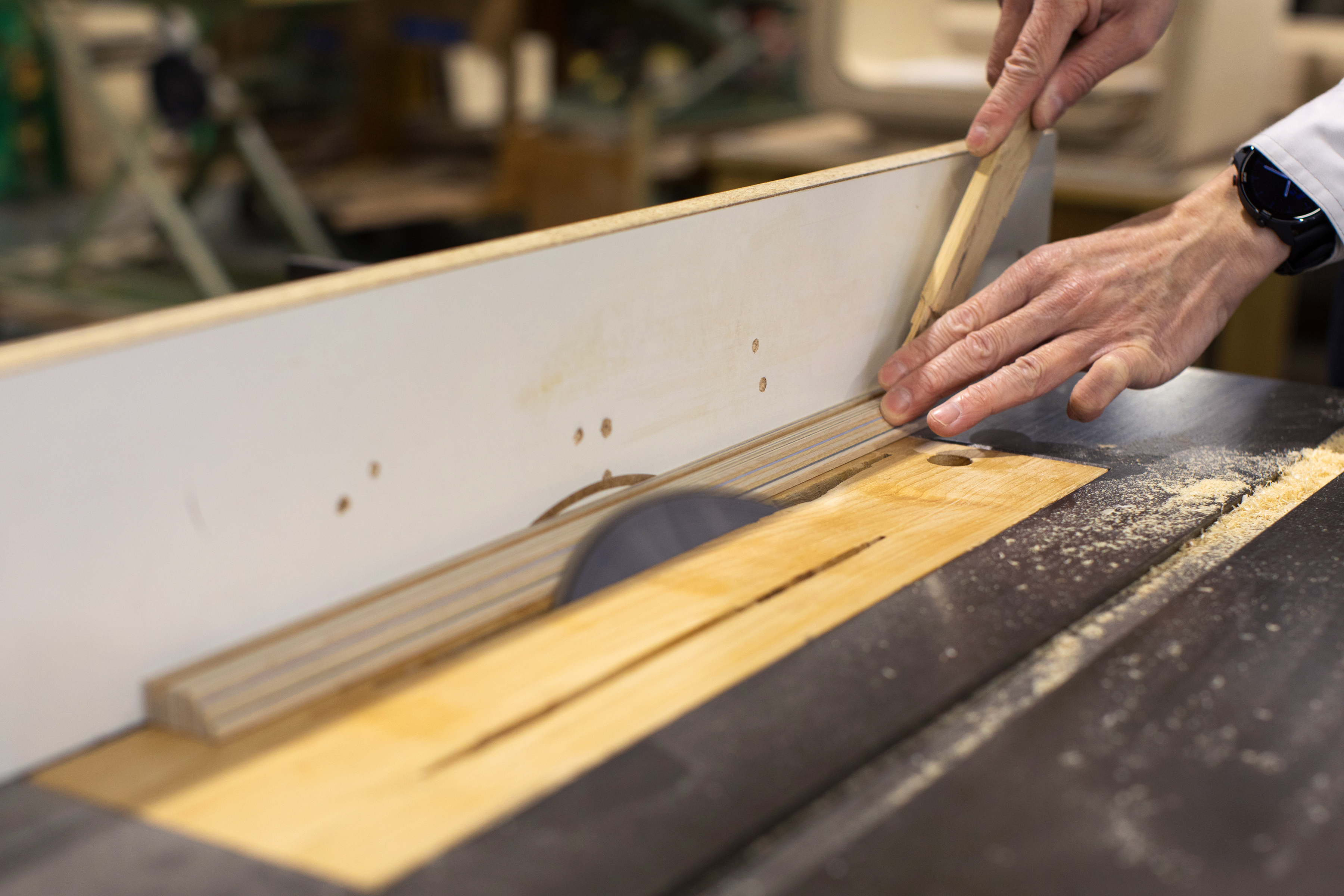
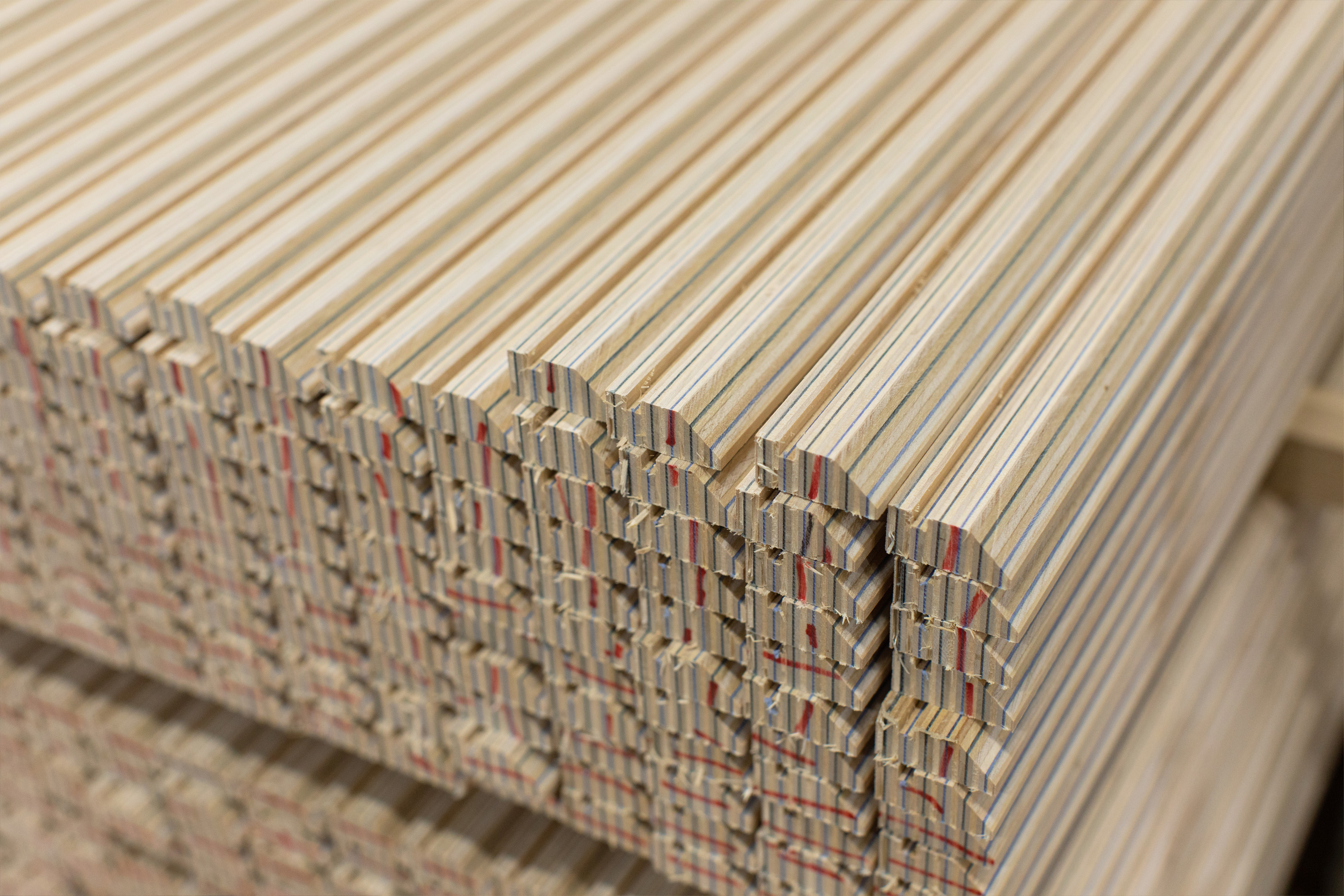
Tsukimoto
All the lids have different expressions, which adds to the overall flavor. This is because all trees are different and, just like people, have their own personalities. The longer you use the case, the more it will acquire character, which I think will lead people to grow quite attached to it.
Watanabe
Seeing 150 colors spread out in front of you is a rare experience. It's colorful and fun just to look at, and I would be happy if the wooden box could help expand the imagination of the artists themselves.
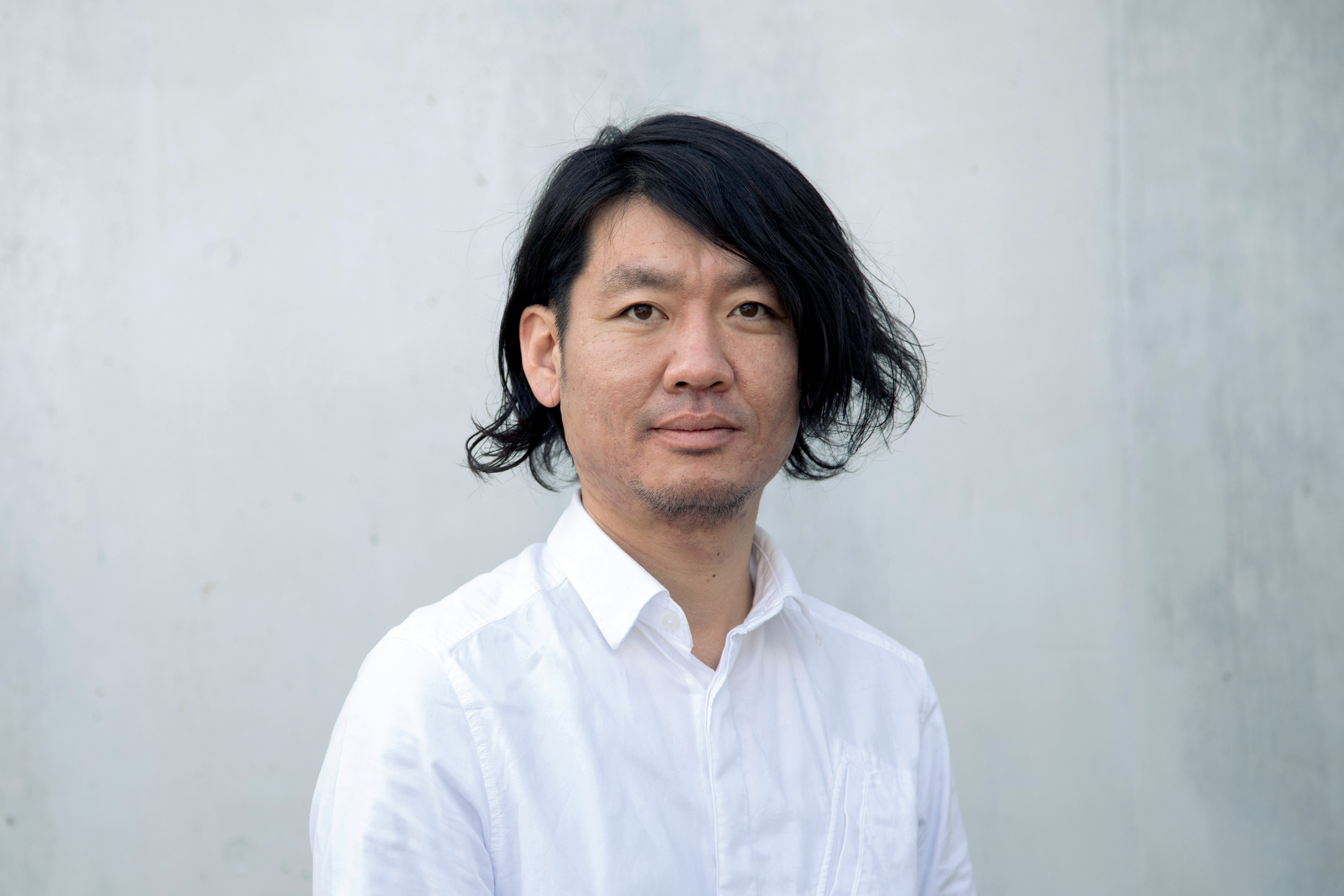
Yoshita Watanabe
Representative Director of Atelier Setsuna Co., Ltd. Born in Miyagi Prefecture in 1981. Associate professor at the Department of Product Design, Tohoku University of Art and Design. After studying at KONSTFACK, Sweden’s National University of Arts, Crafts and Design, he worked as a freelance designer before establishing Atelier Setsuna in Yamagata. He works on design projects that transcend specific boundaries. including furniture, products, stores and houses. He has received many awards, including the Good Design Award.
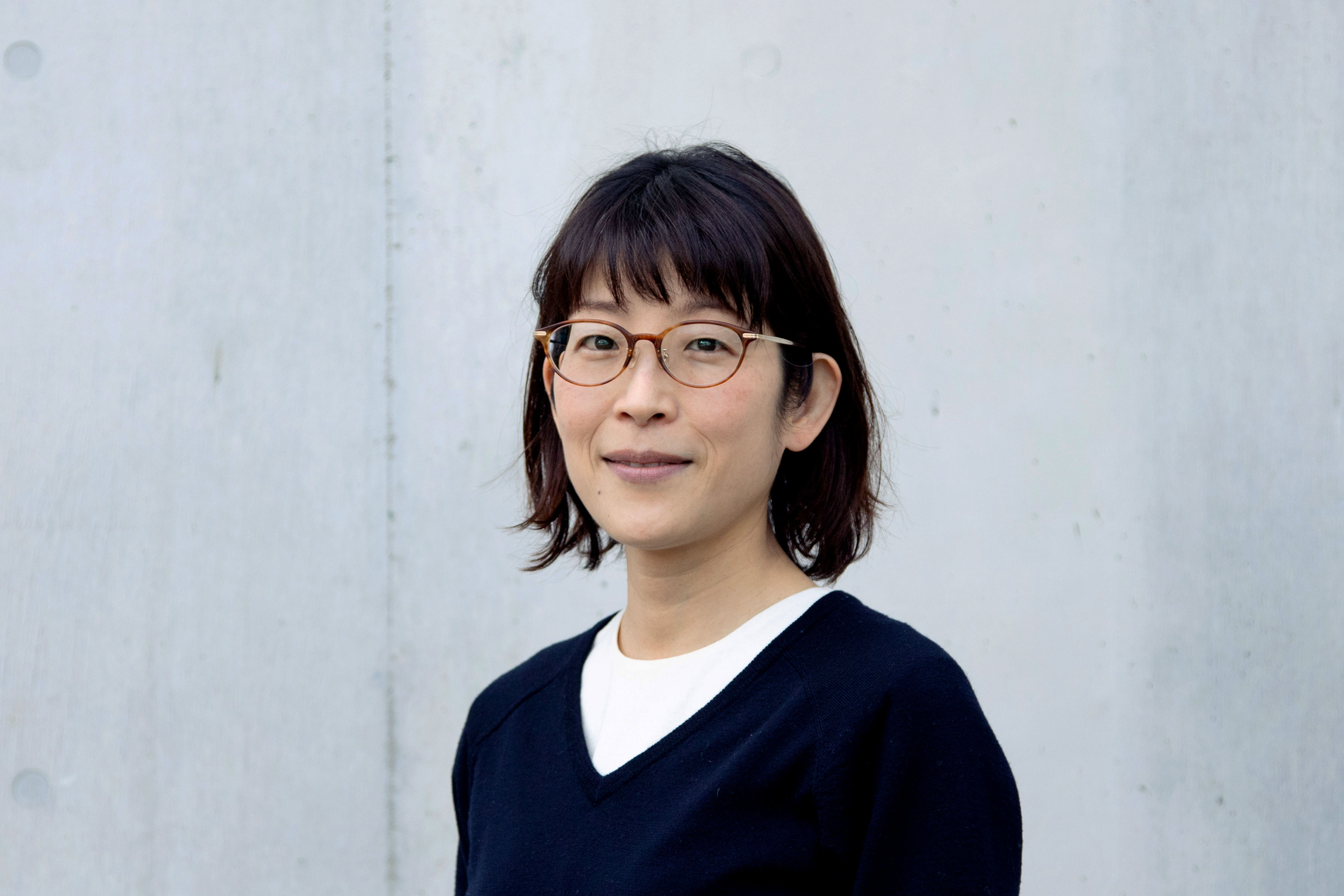
Kumiko Tsukimoto
Member of the Design Department of the Yamagata Research Institute of Technology. She supports companies in the prefecture from a design perspective in line with Yamagata Prefecture's design promotion guidelines, She also manages the information site Yamagata Design and the Yamagata Excellent Design project, which highlights and honors products made in the prefecture and design-related initiatives.



